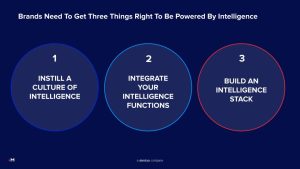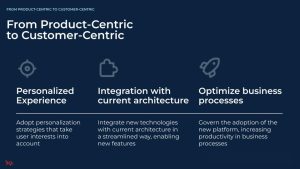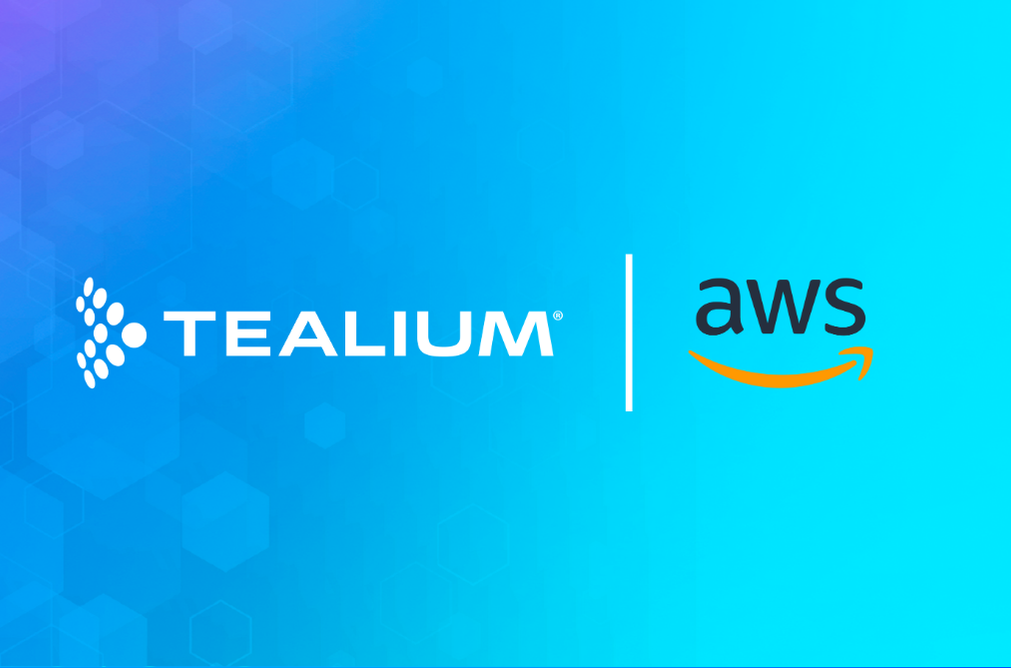We are all living through a seismic shift. Artificial Intelligence is not just a buzzword. It’s a new industrial revolution, and it’s reshaping how we live and work. For enterprises, the promise is boundless: hyper-personalization, predictive insights, and automated customer experiences that were once science fiction.
But there’s a critical, and often-overlooked, problem.
Many organizations are building sophisticated AI models on top of a “foundational” problem: their data is stale, siloed, and incomplete.
As Ben Gott, Practice Lead at Merkel, notes, enterprises are facing a profound “intelligence gap.” They have more data than ever, but their ability to turn it into a cohesive business strategy is failing.
In a recent webinar, experts from Merkel, BIP, and Tealium unpacked this challenge. The consensus?
Your AI is only as good as the data you feed it, and most AI models are starving for the right kind of data.
The 3 Pillars of an “Intelligence-Led” Enterprise
The biggest hurdle isn’t just technology. It’s a combination of strategy, people, and the tech stack. Ben Gott outlines three pillars that organizations must get right to bridge the “intelligence gap.”

- Organization: Instill a Culture of Intelligence This is an organizational challenge that must come from the top. “Data-driven” is almost outdated; the new standard is “intelligence-led.” This requires C-suite buy-in to use intelligence for decisions, aligning KPIs across the entire business. It’s about moving beyond dusty dashboards and fostering a partnership between marketing, finance, and data teams, all marching in the same direction.
- People: Foster New Skills and “Data Storytelling” You can’t just hire data scientists and hope for the best. You need a matrix structure, a “hub and spoke” model, where analysts, researchers, and engineers sit close to product teams but also “know each other.” More importantly, you need to cultivate the underrated skill of data storytelling. You can have the smartest brains in the room, but you need someone who can turn their complex findings into a compelling story the business can understand and act on.
- Technology: Build a Modern, Flexible Stack Your people and culture can be perfect, but if your data collection at the bottom isn’t flowing into intelligence generation at the top, it will fail. This means building a stack with a strong identity layer, AI-enabled workbenches, and governance. Ben highlights the rise of “agentic BI,” where AI agents don’t just present data but actively suggest visualizations and distribute intelligence, moving far beyond the “old model” of static dashboards.
Your Only Differentiator: Actionable Customer Data
This technology pillar is where the entire AI revolution will either succeed or fail. As Ulisse Sarmiento, VP of Solution Engineering at Tealium, explains, “Every company today has access to the same marketing platforms, the same AI models, and the same target customers. The only thing you have that no one else has is your customer data.”

But data is not actionable by default. “Data only becomes strategic when it’s clean, trusted, and above all, actionable,” Ulisse warns.
This is where the concept of the data layer evolves. For years, the data layer was just a simple description of a website. Today, it must be a dynamic, connected, and consent-aware data foundation.
It must blend:
- Historical Behavior: Data from your cloud warehouse or CRM.
- Zero-Party Data: What customers intentionally share with you.
- Real-Time Behaviors: What a customer is doing right now, the clicks, the intent signals, the context of their in-the-moment journey.
Ulisse draws a critical distinction between two types of interactions:
- Customer Engagement (The Past): These are traditional channels like email, SMS, and social, which rely on historical data to communicate what happened.
- Customer Conversation (The Present): These are real-time channels like AI agents, call centers, mobile apps, and websites. They don’t care about last week; they need to know what’s happening in the next 50 milliseconds.
Your AI lives in the “Conversation” world. “An AI data layer describes what is happening right now,” Ulisse says, “and helps to figure out what should happen next.”
From Theory to Practice: AI in Travel and Banking
Victor Bueno, MarTech Competence Director at BIP, showcased how this real-time foundation powers real-world use cases, moving companies from a “product-centric” to a “customer-centric” approach.

Use Case 1: The Online Travel Agency (OTA)
- The Challenge: An OTA with over 4 million different offers (destinations, travelers, room types) was stuck in a “one-size-fits-all” model.
- The Solution: They built a multi-level experience. An internal “AI Desk” creates predictive models. The Tealium CDP feeds these models rich, real-time behavioral data and, in turn, takes the model’s output (like “family traveler” or “couple on a budget”) and activates it across all channels.
- The Result: A customer who is browsing family destinations in real-time sees a personalized offer, while data from an offline call center interaction enriches their profile, ensuring the next web visit is even more relevant.
Use Case 2: The Mobile-First Bank
- The Challenge: A traditional bank needed to move its customers to a mobile-first approach and provide more than just a balance statement.
- The Solution: They created an AI Banking Concierge. By leveraging customer data (with full consent), the AI agent is fed real-time transaction and profiling data.
- The Result: The mobile app becomes the central bank. It can provide next-best offers (like credit opportunities), boost loyalty through a partner network, and offer intelligent suggestions on investments, all within a single, personalized, real-time conversation.
Your 90-Day Action Plan
The consensus is clear: while most organizations are not yet advanced in their AI strategy, the “machines are coming,” and the urgency to build a proper data foundation is high.
For leaders wondering where to even begin, the experts offered a clear 90-day plan:
- Find Your Innovator (The Mindset): “Find the person in your organization that has the mindset for harnessing these things… that is curious,” advises Ben Gott. Give them support and space to innovate.
- Integrate Your Stack (The Plumbing): “Integrate the data layer… with the cloud architecture,” says Victor Bueno. Your data is valuable, but it’s useless if you can’t distribute it in real-time to all your channels.
- Unify Your Data (The Asset): “Focus on turning data from a byproduct into an active asset,” concludes Ulisse Sarmiento. “Unify your data into a real-time, trusted foundation.”
Once you do that, every AI-powered decision you make in the future will be better, faster, and smarter. Stop starving your models and start feeding them the real-time, actionable data they need to grow your business.








